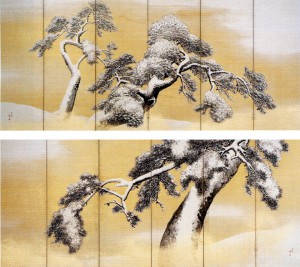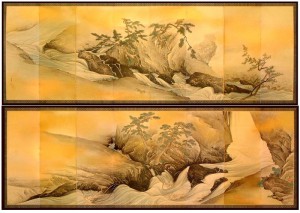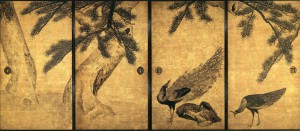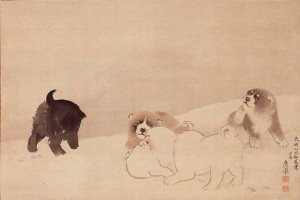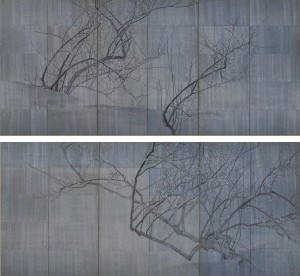Maruyama Shijou School / Schools of Nihonga 003
Maruyama Shijou School / Maruyama / Shijou-ha
Maruyama Shijou School is a name used to refer to both Maruyama School, a school founded by Maruyama Oukyo (1733-95) of the mid-Edo period, and Shijou School, a school in the lineage of Maruyama School established by Matsumura Gekkei (Goshun, 1752-1811).
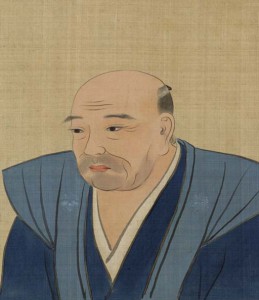
Portrait of Oukyo Maruyama
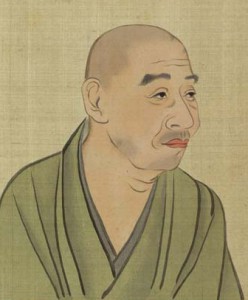
Portrait of Goshun Matsumura
In his youth, Oukyo studied painting in the Kanou School, which is characterized by the use of *model painting (funpon), but later established a new style of painting in which he fused traditional decorativeness with a technique he found that is based on realistic expression using techniques, such as the contourless painting of the ink painting (tsuketate), Oukyo’s realistic but decorative style gained the support of the upper class townspeople of Kyoto and led to the establishment of a school of painting.
*Model painting (funpon) is a model or a draft used for a painting or a sculpture: a copy. Its purpose is mainly to transmit images. There are various kinds of model painting. In some, even the colors of the original are copied, while in others only lines are drawn in “sumi” ink; in some, color is applied faintly, while in others the names of colors are noted. Model painting for transmitting Buddhist iconographic pictures of Esoteric Buddhism is highly artistic and is valuable as reference material.
Although Goshun, at first, was a disciple of Buson Yosa and leaned toward the *literati painting (bunjinga, *nanga), after studying under Oukyo, he developed his own style by fusing the sentiments of the literati painting and the realism of Oukyo. Since many artists of this group lived in Shijou district of Kyoto, the name Shijou School came to be used to refer to the group. The group continued to flourish until the Meiji period and many talented artists, such as Seihou Takeuchi, appeared. This school formed the foundation for nihonga of the moderen period in Kyoto.
*Literati painting:
The term bunjin means high-ranking officials or educated men and intellectuals who led a life away from the hustle and bustle of secular life; they were at the center of Chinese culture. The literati painting is the term used to refer to paintings that these men painted for their own enjoyment, and the word did not indicate a specific painting style at first. However, the literati painting gradually began to be painted intentionally. The ink painting was used as the main method of expression and common ideas in terms of theme and style exist in the literati painting. With its beginning in the Eastern Han dynasty, the literati painting reached its peak during the Northern Song dynasty and a defnite style of painting was established by the end of the Yuan dynasty. In the Ming dynasty, Dong Qichang (1555-1636) pointed out the superiority of the literati painting by categorizing it into beizonghua by professional artists and nanzoughua that express spiritual concepts. Paintings influenced by the literati painting of the Ming and Qing dynasties became popular during the Edo period.
*Nanga:
Nanga is a type of literati painting that was popular in Japan during the Edo period. The name has its origin in the nanzonghua of the Ming dynasty in China. The influence of nanzonghua is also strong in its style. Other styles of Chinese painting were also incorporated to give nanga its own unique style. Taiga Ike and Buson Yosa are famous nanga artists.

